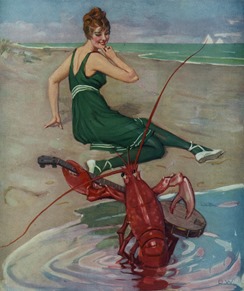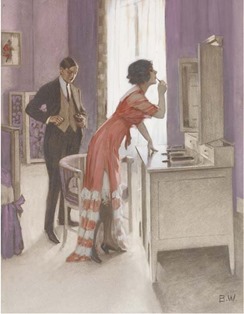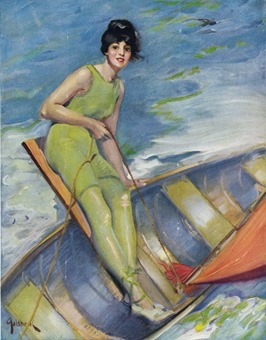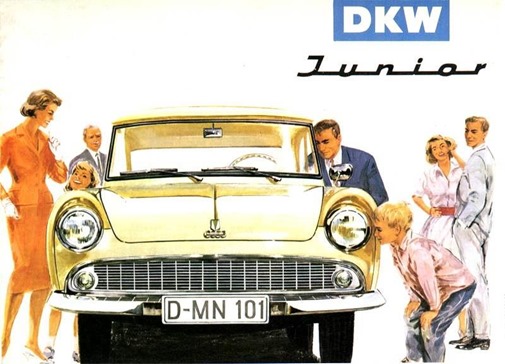Scarborough (/ˈskɑrbrə/ or /ˈskɑrbərə/) is a town on the North Sea coast of North Yorkshire, England. Historicallypart of the North Riding of Yorkshire, the town lies between 10–230 feet (3–70 m) above sea level, rising steeply northward and westward from the harbour on to limestone cliffs. The older part of the town lies around the harbour and is protected by a rocky headland.
With a population of around 50,000 Scarborough is the largest holiday resort on the Yorkshire coast. The town has fishing and service industries, including a growing digital and creative economy, as well as being a tourist destination. Inhabitants of the town are known as Scarborians.
History
Origins
The town was reportedly founded around 966 AD as Skarðaborg by Thorgils Skarthi, a Viking raider, though there is no archaeological evidence to support these claims made during the 1960s, as part of a pageant of Scarborough events. The origin of this belief is a fragment of an Icelandic Saga. In the 4th century there had briefly been a Roman signal station on Scarborough headland 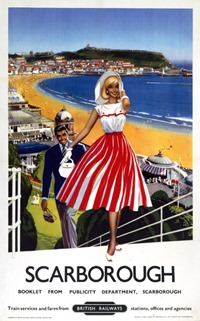 and there is evidence of much earlier Stone Age and Bronze Age settlements. However, any new settlement was soon burned to the ground by a rival band of Vikings under Tosti (Tostig Godwinson), Lord of Falsgrave, and Harald III of Norway. The destruction and massacre meant that very little remained to be recorded in the Domesday survey of 1085. The original inland settlement of Falsgrave was also a Saxon village rather than a Viking one.
and there is evidence of much earlier Stone Age and Bronze Age settlements. However, any new settlement was soon burned to the ground by a rival band of Vikings under Tosti (Tostig Godwinson), Lord of Falsgrave, and Harald III of Norway. The destruction and massacre meant that very little remained to be recorded in the Domesday survey of 1085. The original inland settlement of Falsgrave was also a Saxon village rather than a Viking one.
Feudal and medieval
Scarborough recovered under King Henry II, who built an Angevin stone castle on the headland, and granted the town charters in 1155 and 1163, permitting a market on the sands, and establishing rule by burgesses. Edward II granted Scarborough Castle to his favoured friend, Piers Gaveston. The castle was subsequently besieged by forces led by the barons Percy, Warenne, Clifford and Pembroke. Gaveston was captured and transported to Oxford and then Warwick Castle for execution.
 In the Middle Ages, Scarborough Fair, permitted in a royal charter of 1253, held a six-week trading festival attracting merchants from all over Europe. It ran from Assumption Day, 15 August, until Michaelmas Day, 29 September. The fair continued to be held for 500 years, from the 13th century to the 18th century, and is commemorated in the song Scarborough Fair:
In the Middle Ages, Scarborough Fair, permitted in a royal charter of 1253, held a six-week trading festival attracting merchants from all over Europe. It ran from Assumption Day, 15 August, until Michaelmas Day, 29 September. The fair continued to be held for 500 years, from the 13th century to the 18th century, and is commemorated in the song Scarborough Fair:
-
Are you going to Scarborough Fair?
-
—parsley, sage, rosemary and thyme….
Resort development
Scarborough and its castle changed hands seven times between Royalists and Parliamentarians during the English Civil War of the 1640s, enduring two lengthy and violent sieges. Following the civil war, much of the town lay in ruins.
In 1626, Elizabeth Farrow discovered a stream of acidic water running from one of the cliffs to the south of the town. This gave birth to Scarborough Spa, and Dr Wittie’s book about the spa waters published in 1660 attracted a flood of visitors to the town. Scarborough Spa became Britain‘s first seaside resort, though the first rolling bathing machines were not noted on the sands until 1735.
The coming of the Scarborough–York railway in 1845 increased the tide of visitors. Scarborough railway station claims a record for the world’s longest platform seat.
 Growing influx of visitors convinced a young architect (John Gibson) with an eye to the future to open Scarborough’s first purpose-built hotel. In 1841 a railway link between York and Scarborough was being talked of and he decided that the area above the popular Spa building could be developed. He designed and laid the foundations of a ‘hotel’. (This was a new name derived from the word ‘hostel’ which would serve the same purpose but would be bigger and finer than the traditional inns). Gibson then passed the construction of this hotel to the newly formed South Cliff Building Company. On Tuesday, 10 June 1845 Scarborough’s first hotel was opened—a marketing coup at the time, as the Grand Hotel, soon to be Europe’s largest, was not yet finished.
Growing influx of visitors convinced a young architect (John Gibson) with an eye to the future to open Scarborough’s first purpose-built hotel. In 1841 a railway link between York and Scarborough was being talked of and he decided that the area above the popular Spa building could be developed. He designed and laid the foundations of a ‘hotel’. (This was a new name derived from the word ‘hostel’ which would serve the same purpose but would be bigger and finer than the traditional inns). Gibson then passed the construction of this hotel to the newly formed South Cliff Building Company. On Tuesday, 10 June 1845 Scarborough’s first hotel was opened—a marketing coup at the time, as the Grand Hotel, soon to be Europe’s largest, was not yet finished.
Architecture

 When the Grand Hotel was completed in 1867 it was one of the largest hotels in the world and one of the first giant purpose-built hotels in Europe. Four towers represent the seasons, 12 floors represent the months, 52 chimneys represent the weeks and originally 365 bedrooms represented the days of the year. A blue plaque outside marks where the novelist Anne Brontë died in 1849. She was buried in the graveyard of St Mary’s Church by the castle.
When the Grand Hotel was completed in 1867 it was one of the largest hotels in the world and one of the first giant purpose-built hotels in Europe. Four towers represent the seasons, 12 floors represent the months, 52 chimneys represent the weeks and originally 365 bedrooms represented the days of the year. A blue plaque outside marks where the novelist Anne Brontë died in 1849. She was buried in the graveyard of St Mary’s Church by the castle.
The town has a fine Anglican church, St. Martin-on-the-Hill, built in 1862–63 as the parish church of South Cliff. It contains works by Dante Gabriel Rossetti, William Morris, Edward Burne-Jones and Ford Madox Brown.
Text from Wikipedia
Related articles
Filed under: British, Ephemera, Holidays, Traveling Tagged: British railway posters, British Railways, Scarborough


























